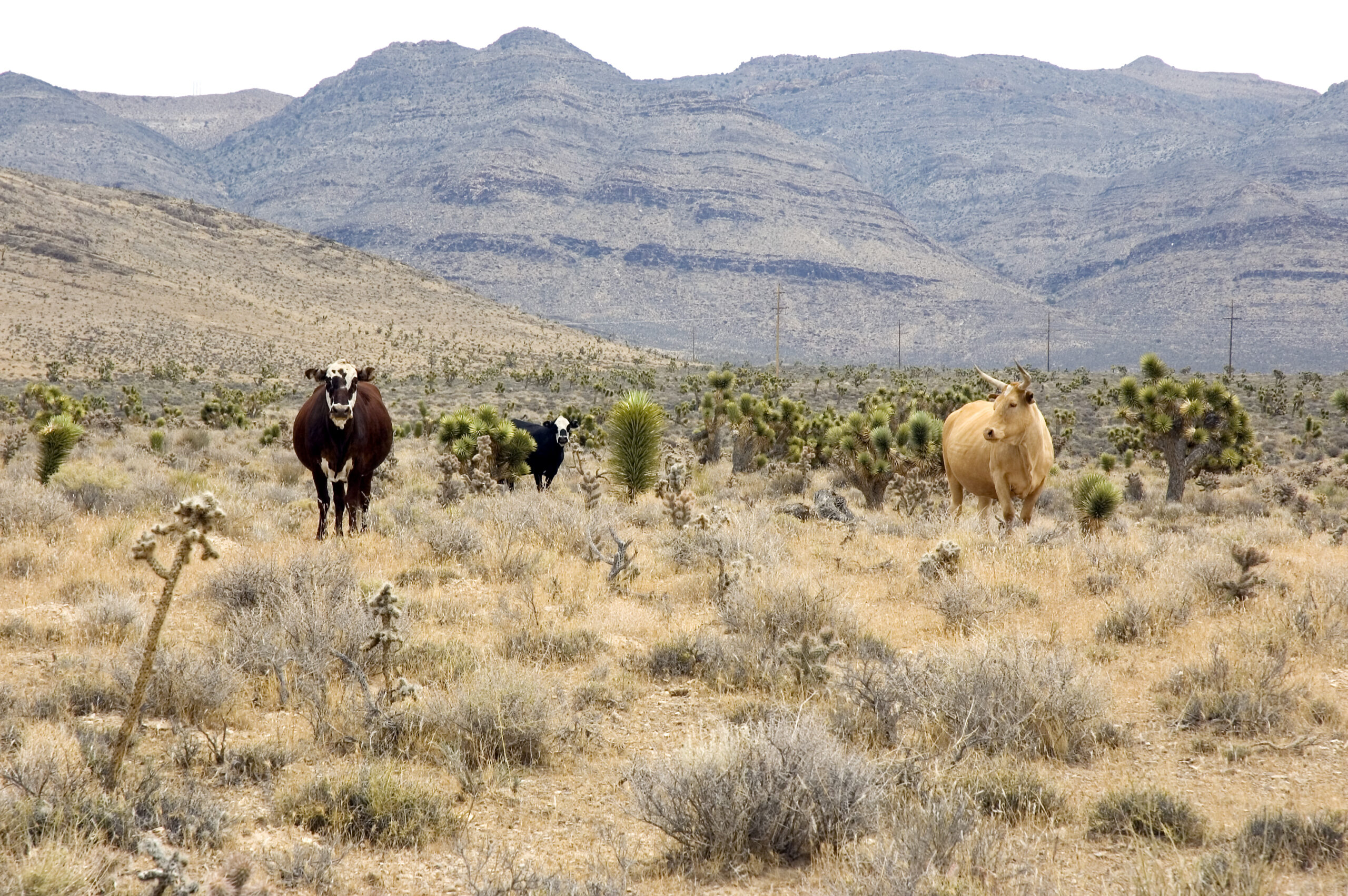Originally appeared in The Wall Street Journal on April 22, 2014.
Does this sound familiar? A rancher is grazing cattle on federal land, just as his family did for generations. Environmentalists come along and say the cattle must go; they would rather the land be used to protect tortoises than to feed cows.
No, this is not the battle between rancher Cliven Bundy and the Bureau of Land Management that captured the nation’s attention last week. And this story, instead of devolving into violence as the Bundy roundup did, ends with a handshake.
It happened in 2003 in Arizona, across the border from the Bundy ranch in Nevada. Tony Heaton, the rancher, approached the Conservation Fund, a nonprofit environmental group, and negotiated a deal: The fund paid him several hundred thousand dollars in exchange for receiving his permit to graze on a 44,000-acre federal allotment near the Mount Trumbull Wilderness.
No violence, no protesters, no armed federal agents—just a check and a contract. Heaton had been having difficulties with hikers and other land users on the allotment and realized it might be time to stop running cattle. Still, the permit had value. “I didn’t want to just give it away,” Heaton (now deceased) told High Country News at the time.
Grazing buyouts such as Heaton’s are quietly occurring in parts of the West and show how conflicts over federal land management can be resolved peacefully. Call it free-market environmentalism. And contrast it with a much more familiar story—one in which interest groups endlessly tussle over how federal lands should be managed and litigate at every turn.
The range war still brewing outside Cliven Bundy’s ranch in Bunkerville, Nev., is an example of the dysfunctional status quo on federal lands. Outside this small community 80 miles northeast of Las Vegas, dozens of protesters have clashed with federal agents, prompting officials to call off a controversial cattle roundup due to concerns over public safety. The Bureau of Land Management intended to confiscate Mr. Bundy’s cattle for illegally grazing on federal lands that are considered habitat for the federally protected desert tortoise.
Mr. Bundy failed to comply with modifications made to his grazing permit in 1993 to protect the tortoises and refuses to pay grazing fees to the government. In the heat of the standoff, Ammon Bundy, one of Cliven Bundy’s sons, was shot with a stun gun while protesters were confined to “First Amendment Areas,” free-speech zones similar to the ones set up by Russia during the Sochi Olympics.
Free-market environmentalism offers a better approach. Since 2002 the National Wildlife Federation has secured more than half a million acres of federal grazing land outside Yellowstone National Park to provide habitat for bison, grizzly bears and wolves. The group negotiates voluntary buyouts with ranchers and pays for the federal grazing permits with its own money.
Rick Jarrett had a permit to graze cattle on 8,000 acres in the Gallatin National Forest outside Yellowstone but was losing livestock to bears and wolves. “I was looking for solutions, not playing politics,” Mr. Jarrett told the National Wildlife Federation magazine after striking a deal to sell his permit to the group in 2008. “I guess that’s why it worked so well.”
The Grand Canyon Trust has negotiated buyouts in Utah since 1996, and the Conservation Fund holds permits it purchased from ranchers on 2.5 million acres of federal land in the West—including several allotments near Mr. Bundy’s ranch in Clark County, Nev. In New Mexico, negotiations are under way for environmental groups to buy out grazing permits in the Gila National Forest to alleviate livestock conflicts with the Mexican gray wolf.
Rancher Terry Reidhead is negotiating with one of the groups, WildEarth Guardians. “We’ve been making a living off this old forest for 100 years,” he told High Country News earlier this year. “But it’s a steep, rugged allotment and it’s probably better suited for wildlife than anything.”
Buyouts require ranchers and environmentalists—two groups that often don’t get along—to work together. Some ranchers believe their grazing rights are inalienable, while some environmentalists believe they shouldn’t have to pay for species preservation. Yet buyouts are quietly gaining momentum on vast stretches of the American West, where more than half of the land is federally owned.
The institutions that manage these lands, however, were designed for a bygone era. Today’s federal agencies are ill-equipped to reconcile the ever-changing demands placed on federal lands—from species protection to resource extraction. Grazing buyouts, for example, often come with requirements that the land still be used regularly for grazing, a rule that can discourage environmental groups from negotiating such deals. The laws and regulations governing federal lands need to evolve to accommodate changing demands in a way that encourages cooperation instead of conflict.
To some extent this change is already under way. In many Western states, laws now allow water rights to be sold or leased for environmental or recreational uses. As a result, some environmental groups simply pay farmers and other water right holders to leave water in-stream to protect fish and wildlife habitat. Grazing buyouts represent a similar evolution in federal land-leasing. But agencies are slow to adapt, and Congress remains unwilling to cut through the knot of competing interest groups and lawsuits.
Cliven Bundy’s battle will continue to capture headlines and rile emotions—and for good reason. But this standoff overshadows the ways others are resolving similar disputes over land use in a cooperative manner, making the wild, wild West a little less violent—but perhaps just as wild.





